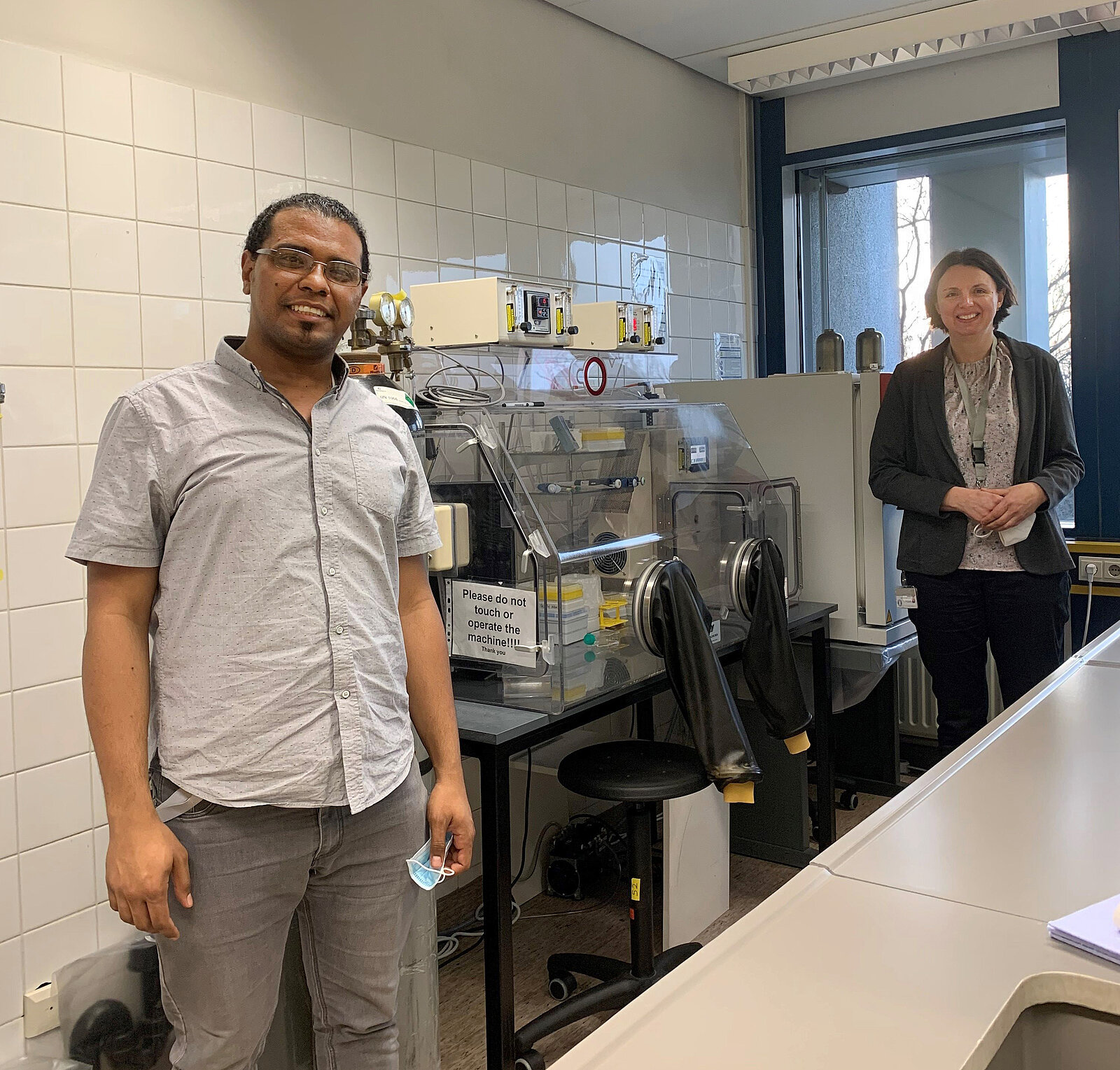
How does SARS-CoV-2 affect intestinal functions?
Ahmed Elmontaser Mohamed is a PhD scholar of the Society of Friends of TiHo since May 2020. He completed his Bachelor of Veterinary Science in 2011 and Master of Sciences in 2013 at Sudan University of Science and Technology. For his PhD thesis, he is doing research on experimental intestinal models.
Currently, Ahmed Elmontaser Mohamed is a PhD student in the group of Professor Dr. Maren von Köckritz-Blickwede and registered in the PhD program Veterinary Research and Animal Biology. With his PhD project in infectious biochemistry, he hopes to help clarify previously unknown aspects of COVID-19 disease. In addition to symptoms affecting the respiratory tract, there are an increasing number of case reports of COVID-19 patients showing that massive gastrointestinal symptoms can also occur, such as diarrhea. His project aims to explain the molecular pathophysiology of gastrointestinal symptoms, including the effect of hypoxia, or lack of oxygen, and/or viral exposure in intestinal tissues. The project team is collaborating with various institutes and research groups at the TiHo to develop suitable experimental intestinal models that can be used in different branches of science. We asked Ahmed Elmontaser Mohamed and Professor Dr. Maren von Köckritz-Blickwede about the current state of research in the project:
With which research groups at TiHo are you collaborating on the project?
We are currently working on the research project together with researchers from Professor Dr. Hassan Naim's group at the Institute of Biochemistry. Their focus is the biochemical and cell biological identification of intracellular mechanisms underlying the transport and function of carbohydrate-digesting enzymes in intestinal epithelial cells. Another project partner is the Replacement and Complementary Methods to Animal Experimentation group of Junior Professor Bettina Seeger, PhD. They are creating intestinal organoids from induced pluripotent stem cells for the studies in order to reduce animal experiments - a very important part of the project. Also involved is Professor Asisa Volz, PhD, from the Institute of Virology. With her team, she is working to confirm the results with biopsies from SARS-CoV-2 infected hamsters. In addition, collaborations are planned with the newly appointed Professor Dr. Gisa Gerold on the cholesterol metabolism of the cells.
Are there already first results?
We have established a model from permanent intestinal epithelial cells, so-called Caco-2 cells, and compared it with an organoid model from induced pluripotent stem cells. We did all this under reduced oxygen conditions (hypoxia) to mimic the pathophysiological oxygen conditions of infection. For this purpose, we use a hypoxia glovebox. This box is airtight and allows us to incubate the cells under specific conditions.
Can the methods also be used to evaluate new therapies?
Yes, we have started collaborations with researchers at the Hannover Medical School and other university hospitals to test therapeutic approaches with our method. This will allow us to evaluate how well the system can be applied to such questions. The systems are very important for improving animal test replacement methods. We are currently preparing the data for publication.
How important do you think the findings are for COVID-19 therapy and its long-term consequences?
Currently, the findings on the late effects of SARS-CoV-2 infection are still insufficient. Therefore, the data for a better understanding as well as new animal experimentation methods to test new therapeutic approaches are absolutely necessary. In severe courses of COVID-19 infection, oxygen plays a critical role in patient survival. Therefore, it is necessary to study the immune response under reduced oxygen conditions to understand the basic mechanisms of disease progression. In some COVID-19 patients, "silent hypoxia" occurs, which is not recognizable at first glance, but is life-threatening because the oxygen content in the blood drops to 50 percent and thus the cells in the tissues also have to manage with extremely little free oxygen.
The interview was conducted by Antje Rendigs.



